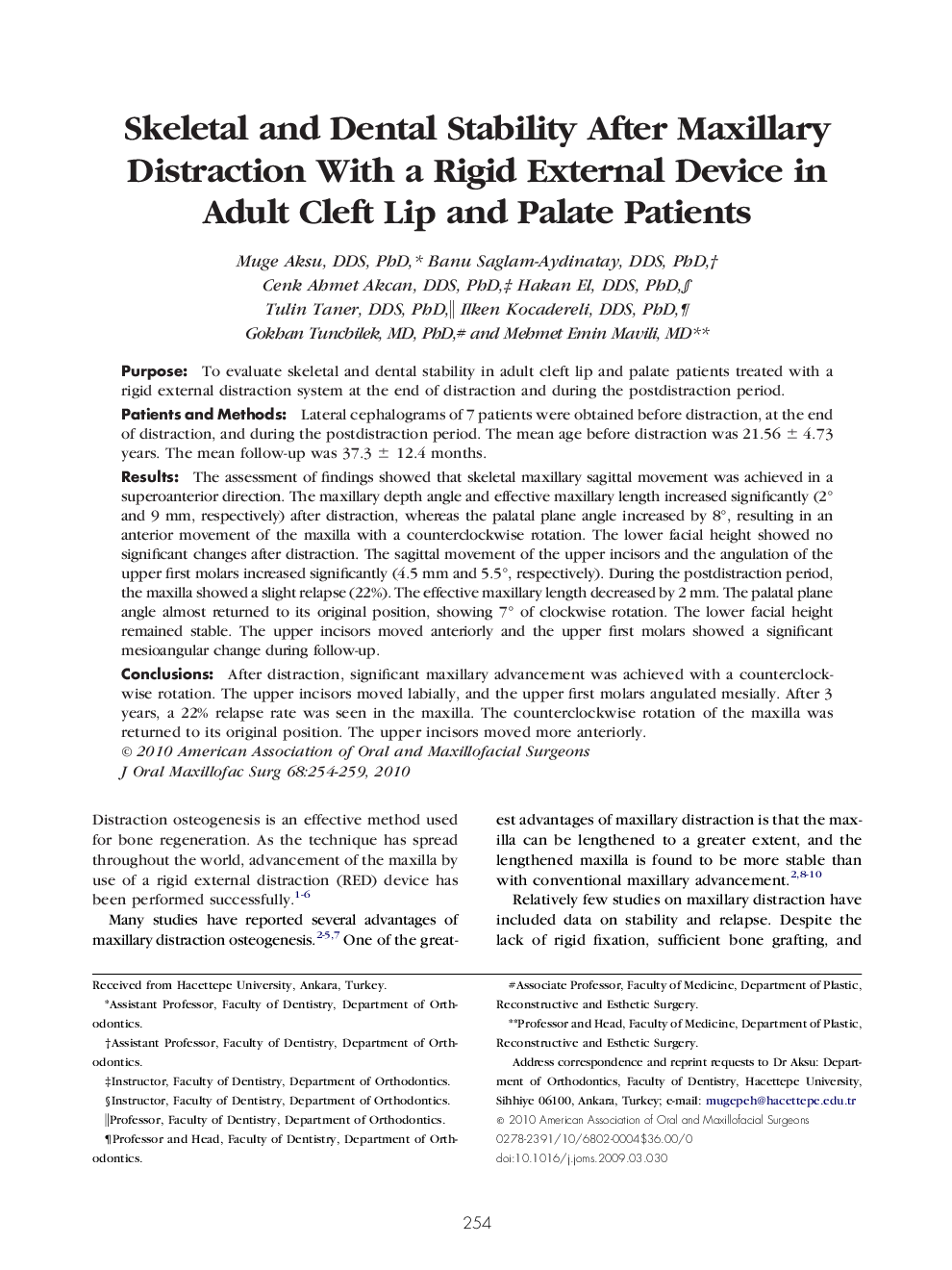| کد مقاله | کد نشریه | سال انتشار | مقاله انگلیسی | نسخه تمام متن |
|---|---|---|---|---|
| 3157173 | 1198167 | 2010 | 6 صفحه PDF | دانلود رایگان |

PurposeTo evaluate skeletal and dental stability in adult cleft lip and palate patients treated with a rigid external distraction system at the end of distraction and during the postdistraction period.Patients and MethodsLateral cephalograms of 7 patients were obtained before distraction, at the end of distraction, and during the postdistraction period. The mean age before distraction was 21.56 ± 4.73 years. The mean follow-up was 37.3 ± 12.4 months.ResultsThe assessment of findings showed that skeletal maxillary sagittal movement was achieved in a superoanterior direction. The maxillary depth angle and effective maxillary length increased significantly (2° and 9 mm, respectively) after distraction, whereas the palatal plane angle increased by 8°, resulting in an anterior movement of the maxilla with a counterclockwise rotation. The lower facial height showed no significant changes after distraction. The sagittal movement of the upper incisors and the angulation of the upper first molars increased significantly (4.5 mm and 5.5°, respectively). During the postdistraction period, the maxilla showed a slight relapse (22%). The effective maxillary length decreased by 2 mm. The palatal plane angle almost returned to its original position, showing 7° of clockwise rotation. The lower facial height remained stable. The upper incisors moved anteriorly and the upper first molars showed a significant mesioangular change during follow-up.ConclusionsAfter distraction, significant maxillary advancement was achieved with a counterclockwise rotation. The upper incisors moved labially, and the upper first molars angulated mesially. After 3 years, a 22% relapse rate was seen in the maxilla. The counterclockwise rotation of the maxilla was returned to its original position. The upper incisors moved more anteriorly.
Journal: Journal of Oral and Maxillofacial Surgery - Volume 68, Issue 2, February 2010, Pages 254–259